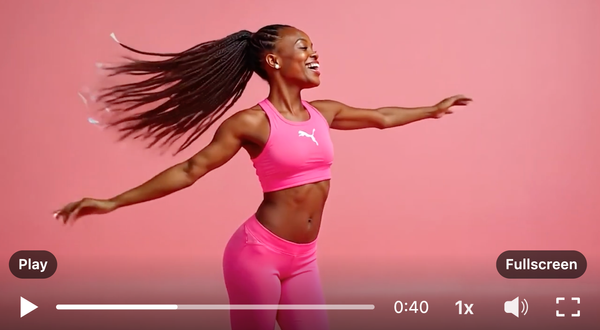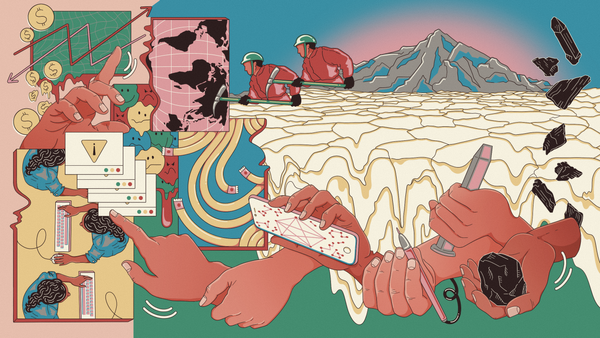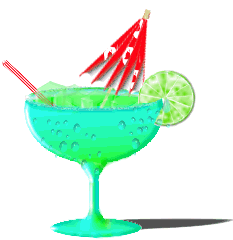Parasocial strategy: The very tiring, very online art of inspiring one-sided intimacy at scale
Your TL;DR Briefing on things worth tracking — and talking about over your next power lunch. *Wink.* This time the thing is how making a whole bunch of people feel like you “get” each other is inarguably the key to success and fatigue online.

The thing is:
It used to be that “parasocial” was the kind of adjective social scientists and media researchers would talk about in the ivory towers of academia. They’d sometimes verb it “parasocialize,” even noun it, “parasociality,” to discuss the phenomena of celebrity across mass media. They’d ethnographically observe what makes, say, an angsty teen feel like the only person who knows them in the whole wide world is, of course, the lead vocalist of Sunny Day Real Estate. *Teen me shyly raises a hand. Teen me assumes “you won’t get it.”*
But, alas, today, for many very online digital professionals who have to “perform” some “personal brand” online, if you’re not successful at inspiring what’s termed “parasocial intimacy,” then it can feel like you’re an abject failure. Even if your day job is ostensibly not having a personal brand. You might feel like SZA. She put it concisely in a 2023 interview with Zane Lowe: “I hate being perceived.”
Then snap if this rings true. You look at the analytics for your latest video, podcast, LinkedIn post (shudders), Bluesky thread (indie sleaze but make it microblogging), or, gulps, your little independent newsletter (zines in your inbox!). At first you think, this shit is obviously great, right?! Send. Post. Unsubscribe. Unfollow. Oh, maybe instead I’m a steaming pile of it?! Why are people not parasocially getting me?! (OK, you might not say “why are people not parasocially getting me,” I admit. That’s probably just the distinctively queer voice of my inner saboteur, who is a social science nerd.)
But you can’t really understand what resonates online unless you understand the paradigm shifts in — pardon yet another p-term — parasocial interactions, those one-sided emotional connections where audiences feel intimacy with posters who have little-to-no awareness of them individually. We’ve witnessed an evolution from research curiosity to arguably an essential creative career strategy. As I reported recently in this deep World Wide Weird feature, the travel content creator economy is a compelling microcosm for what’s going on with stuff like shifting platform power, income disparities on social media and, indeed, the whole concept of influence itself.
One of many cases in point, which we connect in the report: Two years ago, trend analyst Alice Crossley of The Future Laboratory noticed something revealing during her Central American backpacking trip — ordinary TikTokers were going viral simply for documenting their travels, then parlaying that visibility into sold-out group adventures. “They quickly became known amongst everyone travelling a similar route to them,” she tells ESC KEY .CO of a content-creating pair who transformed from random travelers into, essentially, tour operators (more examples and exclusive interviews with content creators in the extra long-read).
This phenomenon shows yet again the role of black box algorithms as kingmaker and we, the serfs in the taste clusters. It’s not only culture that’s been flattened as a result, which Kyle Chayka outlined in his second book, 2024’s “Filterworld.” Algorithms are functioning as A&R for the travel media ecosystem and the recruiter for the modern-day group travel trade. It’s what happens when the algorithm randomly promotes the next hustling creator. Post enough in the ever-changing “algorithmically correct” way and suddenly strangers recognize you poolside. Next, you might be selling them on a group trip.
These content creator-led group trips connecting perfect internet strangers are where otherwise abstract dynamics become brilliantly, sometimes awkwardly, visible in the real world.
The thing about that is:
What researchers term “parasocial interaction” has been a subject of scrutiny since the mid-20th century, when they began to track how radio and TV viewers formed one-sided bonds with media personalities. By the late ’90s, as the early internet bloomed with personal websites and dancing panda GIFs, academics such as John Hoerner began proposing ways to measure how this new medium drove user engagement and, of course, commercial value for the website owners. Hoerner’s very dot-com-era-sounding study, 1999’s “Scaling the Web: A Parasocial Interaction Scale for World Wide Web Sites,” found strong correlations between parasocial signals and both the perceived value of website visits and users’ intention to return. As I touched on in a personal essay about GIFs for the Internet Archive’s “Vanishing Culture” report, this all basically confirmed what GeoCities site builders knew to be true when they invited visitors to sign their website’s guestbooks.
What’s changed isn’t the existence of these relationships but the medium, the kind of personality at the center of it all and the intensity of the interactions. The early web’s parasocial connections were comparatively weak and remote — built through screeching dial-up, basic HTML and cheesy graphics. Today it’s 24/7. Platforms have turbocharged these dynamics through endless feeds of algorithmic personalization and performatively unpolished, “real” video content.
It’s arguably the fundamental sign you have influence. It’s also sometimes perceived as pejorative. In fact, some fans are so sick of the word “parasocial” in popular lexicon that they consider it an “insult,” as one Swiftie posted in 2023 to the gay fan subreddit r/GaylorSwift. (“To be quite frank, nearly every single one of us has a parasocial relationship with Taylor,” the OP wrote.)
But it’s no longer an analytical frame reserved for celebrities. Content creators may not have Swiftie-level fanbases. But through the algorithmically ordained content strategy and cadence, they can inspire something they typically describe with words like “community.”
This is distinctly clear in the travel context because some inspire followers to take, well, a literal pilgrimage. “Through watching the creator’s TikToks, the traveler has a parasocial intimacy with the creator, which makes them feel more comfortable joining a group of strangers for a trip to the other side of the world,” explains Crossley. This post-pandemic context for younger travelers is crucial, she says. After lockdown isolation, the craving for connection runs deep, even if that connection begins through algorithmic matchmaking. The willingness to fly across the world and share accommodations with strangers who follow the same content creator reveals just how powerful these motivators have become. (Even the CEO of a popular newsletter platform is hosting startup-founder group trips.)
Where things get interesting:
This evolution is inextricably tied to our evolving notion of “authenticity” — perhaps the most emptied-out term in marketing today. Remember Socality Barbie? That viral 2015 Instagram account, where an apparently fed-up photographer in Portland, Oregon posed a Barbie doll in perfectly curated #PNW settings. The bio read, in part, “Authentic Living.” It brilliantly satirized Instagram’s first wave of influencer aesthetics just as that carefully constructed Kinfolk-y brand of “authentic” was beginning to seem over. (Full disclosure: I did not get that editor job at Kinfolk, when the millennial post-Mormon media empire was based in Portland, where I was also a post-Seventh Day Adventist “lifestyle” editor.)
There are essentially two waves of this group travel trend, as we explore in great detail in the long read. This Instagram-to-TikTok evolution reveals how radically our perceptions of authenticity have shifted. Instagram influencers, the first wave in the 2010s, perfected a curated spontaneity. Yes, the effortful effortlessness of golden hour selfies and carefully disheveled flat lays. TikTok creators, hosting group trips 2021 to date, trade in a kind of immediacy. Production values take a back seat to perceived realness. In both cases, the feed becomes a shoppable mood board, but the product is positioned markedly differently.
Right now, authenticity feels like being included in the drama, the gossip, the catharsis.
In a recent issue of One Thing on Substack, Chayka interviewed novelist Tope Folarin about his suggestion that “conversations are the new unit of culture” — explaining why hours-long podcasts in the manosphere and improvisational TikTok monologues feel more “authentic” to audiences today than, say, carefully crafted essays. “Parasociality is a big vector for authenticity and trust in media right now,” Chayka noted in the conversation, indeed, a delightfully meta format for the topic.
The word “authentic” functions less as an actual quality and more as a vessel we continuously refill with whatever attributes feel most genuine in the moment. This makes it simultaneously meaningless and essential to understanding the digital present.
In other words, if we had a Parasociality Barbie posting satire for our times, she would probably be promoting group trips, hanging out with other Ozempic dolls, maybe having three-hour conversations in a video-forward podcast titled “Diary of a She-E-O.”
The thing to talk about over your next power lunch:
We might term the deeper intentional positioning in this media ecosystem, the endless pruning and posturing of our online identities to be ideally perceived by our ideal audiences, as “parasocial strategy.”
If we then entertain the notion that parasocial strategy — this sometimes self-exploiting act of inspiring largely one-sided relationships — has become the unspoken key to success in many very online careers, then we need to reckon with its costs.
Parasocial relationships don’t always imply something unhealthy is going on, as Allegra Rosenberg touched on in a recent National Geographic explainer about the current state of fandom: “Gayle Stever, a professor at SUNY Empire and an expert on parasocial relationships, further research has not borne out that hypothesis [that it’s driven by loneliness and isolation]. ‘Yes, lonely people form parasocial relationships,’ she says, ‘but so do not-lonely people, who are just as likely to form a connection with that person on the screen.’”
But they can also turn toxic. Some researchers have begun documenting what we might understand best as parasocial fatigue, a kind of emotional burnout experienced by both content consumers and creators alike. Followers grow exhausted by the constant pressure to keep up with their parasocial expectations, while creators buckle under the weight of maintaining manufactured intimacy at scale.
This implies a brutal calculus. Succeed in today’s “content” economy and you’ll need equal parts luck, hustle and parasocial fairy dust. The travel vertical is one of many underexplored examples that lays some of these dynamics bare: converting followers to paying customers who’ll literally book international flights to be in your physical presence is the ultimate parasocial flex. It might also be one of the few ways to make the whole scheme pay you anything close to reasonable wages.
If you want crumbs, the algorithms must feast on you first. All of you. It’s never full. And you’re never enough.
The platform fragmentation we’re witnessing — from TikTok’s uncertain future to Bluesky’s fediverse dreams — only complicates these parasocial economics. For marginalized creators especially, directly monetizing followers through experiences like group trips becomes a community service to those excluded from the travel industry writ large. It’s also one way to counteract the discrimination prevalent in influencer deals, where brands talk about inclusion but it’s often a delusion. “The darker you are, the less you are worth,” one content creator told The Guardian about income disparities among content creators.
As I wrote last month, “For now, content creators don’t have a lot in the way of choice. Even as other channels like a newsletter or a blog offer more direct ownership of the audience relationship, many audiences rely on algorithmic curation to discover new content creators. [...] Even if they follow the content creator to other platforms, TikTok remains the algorithmic matchmaker.”
So while algorithms have determined who our tour guides are, many of the creators themselves remain caught in a digital company town. Many remain reliant on platforms that can change the rules overnight and have pivoted in many ways to the authoritarian agenda of our fascist times — meanwhile struggling to build direct relationships with audiences trained to scroll rather than subscribe.
No wonder the offline meet-up can feel like both an antidote and a financial necessity.
And one long thing to read:
If this TL;DR Briefing piqued your interest, dive into this full feature to see how these parasocial dynamics play out in real-world travel experiences:







